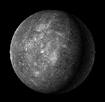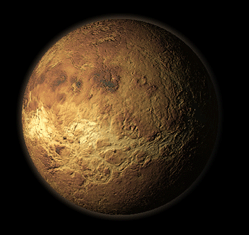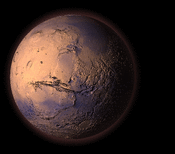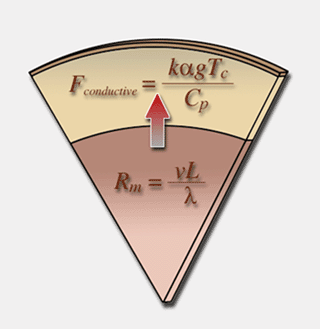




Mercury: weak magnetic field (~200 nT) not well understood, possibly an active dynamo(?).
Venus: no magnetic field detected, the solar wind interact directly with its thick atmosphere.
Mars: no longer gereating a dynamo, part of the ancient crust are strongly magnetized recording an early, brief dynamo (remnant magnetization).
Earth: strong magnetic field (~50,000 nT) generated by an active dynamo.
Questions:
Why do some planets generate a magnetic field while others do not?
How do planets generate magnetic fields?
Core dynamo: The source of a planet's magnetic field is a dynamo. A dynamo is generated by electromagnetic induction; motion of a conducting fluid across magnetic field lines. So convection in a liquid iron-rich core will drive a dynamo. If the heat flowing out of a planet's core is more than the heat that can be conducted through the core, then the core will convect like a pot of boiling water. In other words, the heat flux out of the core exceeds that of adiabatic cooling. The convective motion then can drive a dynamo.
Dynamos tell us about processes occurring deep within a planet's interior. Is the core convecting? What is the power source? Remnant magnetism (a fossilized field acquired by the crust) as we observe on Mars, does not require a convecting liquid core. It tells us about the history of the dynamo (and the planet). What drove the dynamo? Why did it stop?

Conductive adiabat: The critical heat flux at which convection begins to occur, Fconductive
k - thermal conductivity
α - thermal expansivity
g - acceleration due to gravity
Tc - temperature at CMB
(Core-Mantle Boundary)
Cp - specific heat capacity
Magnetic Reynold's number: Rm > 100 implies a dynamo will exist: transportation of field lines dominates over magnetic diffusion
v - characteristic fluid velocity
L - characteristic length scale of
fluid motion
λ - magnetic diffusivity